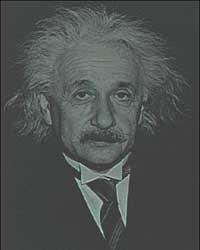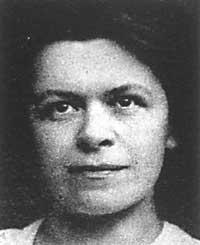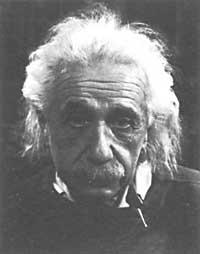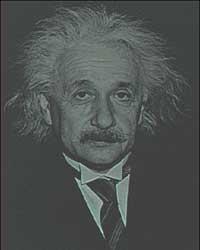Albert Einstein
1992/09/01 Azkune Mendia, Iñaki - Elhuyar Fundazioa Iturria: Elhuyar aldizkaria
This Jewish physicist was born in Ulm (Germany) on March 14, 1879, but during his life he was also a citizen of Switzerland and North America.
Despite being a Jew, he began studying at the Catholic institute in Munich, where he went to live his family as a child. As a child he was not an intelligent pupil and began to speak very late.
In 1894 his father had to travel to Milan, but Albert stayed in Germany to finish high school. Alberto, who only got good grades in mathematics, left school on the recommendation of his teacher. After a vacation in Italy, he went to the university of Switzerland. When he graduated he wanted to work as a teacher, but he did not have the opportunity to do so because he was a Jew and was not a Swiss.
In 1901 he began his activity in a patent office in the city of Bern. It was then that he began to work on his own theoretical physics and in 1905 he published five works in the German magazine Annalen der Physik, where three important theoretical developments were expressed. Another way to determine the molecular dimensions, does the inertia of a body depend on its energy content? the titles of the works.

His first work was used as a memory of the thesis presented in 1905 at the University of Zurich. The second was “revolutionary,” Einstein said. Based on the photoelectric effect and Max Plank’s work on energy quantum he postulated what would later be called “photon.” This article was the beginning of quantum mechanics.
In his third work he applied the calculation of probabilities in the Brownian movement established by the theory. The fourth article was the most important. In it he expresses with great precision the most important discovery of physics of the beginning of the century: “Special theory of relativity”. Although Maxwell's electrodynamics were apparently incompatible with Galileo's relativity, he showed that these theories were perfectly compatible, without altering them at all and adapting the physical concepts of space and time. His fifth work was a consequence of the above. He expressed the equivalence between mass and energy using the famous formula E = mc2.
Although these five works were not published or attended to, they realized the value of the most prestigious physicists of the time, such as Plank, Minkowski or Lorenz. In the end Einstein got the position of professor at the university of Zurich, even though the salary was very bad. His fame was growing and in 1913 he was offered work at the Kaiser Wilhelm Physics Institute in Berlin. However, he previously spent a season at the University of Prague (1911-1912). They called many congresses, such as Solvay, to work on both the theory of relativity and quantum theory.
He tried to apply his theory of relativity to accelerated systems and published the conclusions of his investigations in 1915, in the so-called “General Theory of Relativity”. In general theory, Einstein showed three effects away from what Newton's theory predicted.
De Broglie and Heisenberg were based on a work published by Einstein in 1917 to develop quantum theory. However, Einstein did not fully accept the probabilistic interpretation of the quantum theory of the Copenhagen school. He reproached them for abandoning determinism.
Hitler, of Einstein Berlin, remained to power. He made many trips to foreign universities, but in 1933 he was professor at the “Institute for avanced study” of Princenton in New Jersey, exiled from Germany, in Paris, Belgium and finally in North America. There he tried to gather his death in a theory of synthesis electromagnetism art and gravitation, although he did not achieve the objective.
On the other hand, Albert Einstein always cared about social problems. He spoke and wrote a lot about the state of Israel, Nazism, the Soviet Union, nuclear weapons, armies, etc. In 1939, for fear of German Nazism, he asked President Roosvelt to elaborate a program of investigation of atomic reactions, he did not participate in the elaboration of the atomic bomb of Los Alamos. When he made sure that in 1945 an atomic weapon could be built, he wrote asking President Roosvelt not to do so. Since then he worked to prevent the proliferation of nuclear weapons until his death.
He died in Princentón on 18 April 1955. Soon after, they discovered a chemical element with 99 atomic numbers, which they called “einstennium” in honor of the German physicist Judeo-Swiss American.

Gai honi buruzko eduki gehiago
Elhuyarrek garatutako teknologia





